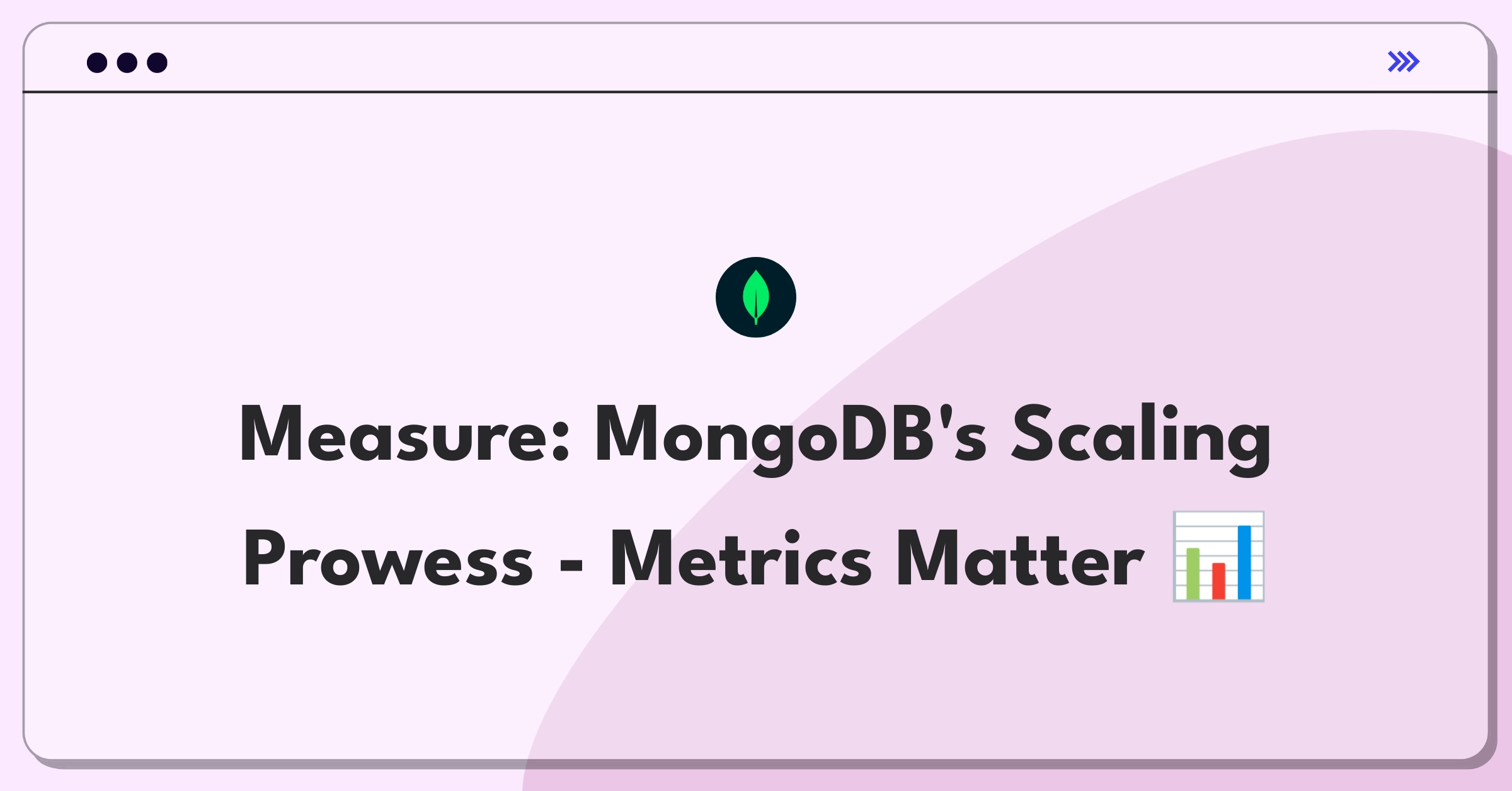Introduction
Defining the success of MongoDB's horizontal scaling capabilities is crucial for evaluating the database's performance and scalability in distributed systems. To approach this product success metric problem effectively, I'll follow a structured framework that covers core metrics, supporting indicators, and risk factors while considering all key stakeholders.
Framework Overview
I'll follow a simple success metrics framework covering product context, success metrics hierarchy, and strategic initiatives.
Step 1
Product Context
MongoDB's horizontal scaling capabilities, primarily implemented through sharding, allow databases to distribute data across multiple machines. This feature is essential for handling large datasets and high-throughput operations in modern, distributed applications.
Key stakeholders include:
- Database administrators: Seeking efficient resource utilization and simplified management
- Application developers: Requiring seamless scalability without major code changes
- Business leaders: Focusing on cost-effectiveness and performance at scale
User flow typically involves:
- Configuring sharding settings
- Defining shard keys
- Monitoring and adjusting shard distribution
MongoDB's horizontal scaling aligns with its strategy of providing a flexible, scalable database solution for modern applications. Compared to competitors like Cassandra or Couchbase, MongoDB offers a more familiar document model while still providing robust scalability.
In terms of product lifecycle, horizontal scaling capabilities are in the maturity stage, with ongoing refinements and optimizations.
Subscribe to access the full answer
Monthly Plan
The perfect plan for PMs who are in the final leg of their interview preparation
$99 /month
- Access to 8,000+ PM Questions
- 10 AI resume reviews credits
- Access to company guides
- Basic email support
- Access to community Q&A
Yearly Plan
The ultimate plan for aspiring PMs, SPMs and those preparing for big-tech
$99 $33 /month
- Everything in monthly plan
- Priority queue for AI resume review
- Monthly/Weekly newsletters
- Access to premium features
- Priority response to requested question


.png)